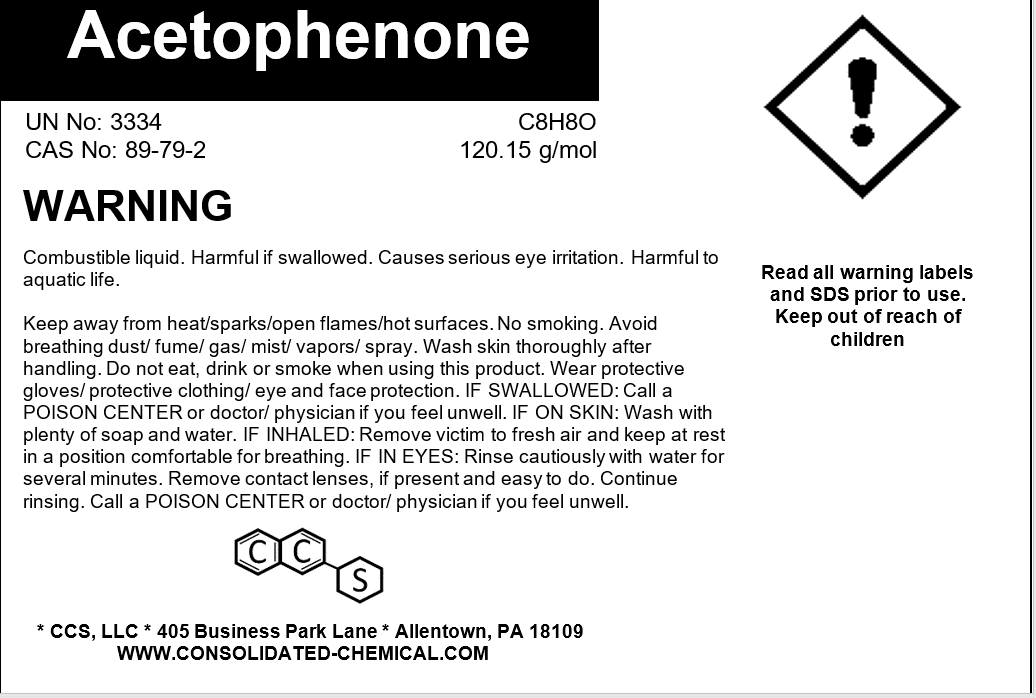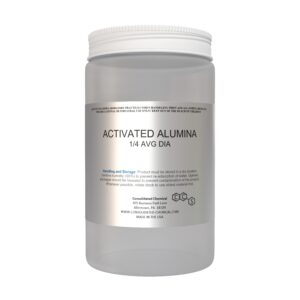Acetophenone – High-Quality Solvent & Intermediate
$14.99 – $59.99
General Information
- Chemical Name: Acetophenone
- Synonyms: Phenyl methyl ketone, Methyl phenyl ketone
- Molecular Formula: C8H8O
- Molecular Weight: 120.15 g/mol
- CAS Number: 98-86-2
- EC Number: 202-708-7
Physical and Chemical Properties
- Appearance: Clear, colorless to pale yellow liquid
- Odor: Sweet, floral (similar to orange blossoms or almonds)
- Density: ~1.03 g/cm³ at 20°C
- Boiling Point: ~202°C (396°F)
- Melting Point: ~19°C (66°F)
- Flash Point: ~82°C (179.6°F), closed cup
- Solubility:
- Soluble in ethanol, ether, chloroform, and most organic solvents
- Slightly soluble in water (~5.5 g/L at 20°C)
Purity
- Minimum Assay: ≥99% (by GC analysis)
SKU: N/A
Categories: Flavoring Agent, Food Additive, Fragrance Chemical, Fragrances & Aromas (15), Industrial Chemical, Solvents (3)
Tags: Acetophenone CAS 98-86-2, Acetophenone Distributor, Acetophenone for Academic Research, Acetophenone for Adhesive Production, Acetophenone for Coatings, Acetophenone for Dyes and Pigments, Acetophenone for Electroplating, Acetophenone for Food Industry, Acetophenone for Lab Use, Acetophenone for Research, Acetophenone Manufacturer, Acetophenone Supplier, Acetophenone Uses in Industry, Acetophenone Wholesale, Advanced Chemical Solutions, Aromatic Compounds Supplier, Aromatic Ketone, Bulk Acetophenone Supplier, Buy Acetophenone Online, Buy Chemicals Online, Chemical Compounds, Chemical Packaging Solutions, Chemical Reagent, Cosmetic Raw Materials, Custom Chemical Repackaging, Flavor additive, Food Flavoring Agent, Fragrance Ingredient, High-Purity Acetophenone, High-Quality Chemicals, Industrial Chemicals, Ketones for Industrial Use, Laboratory Chemicals, Organic Chemistry Reagents, Organic Solvent, Perfume Manufacturing, Pharmaceutical intermediate, Phenyl Methyl Ketone, Pure Acetophenone for Sale, Reliable Chemical Supplier, Resin Manufacturing Chemicals, Safe Chemical Handling, Solvent for Fragrance Formulation, Solvent for organic compounds, Specialty Chemicals Supplier, Synthesis Intermediate, Versatile Industrial Solvent
Description
Acetophenone is a versatile aromatic compound commonly used in various applications. Its pleasant fragrance and excellent solvent properties make it an essential choice for industrial and laboratory needs.
Applications of Acetophenone
Fragrance & Flavor Industry
- Used as a key ingredient in perfumes, soaps, lotions, and other cosmetics for its sweet, floral aroma.
- Acts as a flavoring agent in food and beverages, mimicking natural scents like almond or cherry.
Chemical Intermediate
- Essential in the synthesis of pharmaceuticals, including some anti-inflammatory and anticonvulsant drugs.
- Used to produce resins, polymers, and fine chemicals in various industrial processes.
Solvent
- Efficient solvent for organic compounds, used in laboratory and industrial processes.
- Applied in the extraction and purification of specific chemicals.
Polymer Industry
- Utilized in manufacturing plastics and resins as an intermediate.
- Involved in the production of polyester resins and adhesives.
Pharmaceutical Industry
- Intermediate in the creation of active pharmaceutical ingredients (APIs).
- Plays a role in developing sedatives, hypnotics, and other medicinal compounds.
Academic and Industrial Research
- Commonly used as a reagent in organic synthesis for educational and industrial research labs.
- Its chemical structure makes it suitable for studying reaction mechanisms and pathways.
Miscellaneous
- Employed in electroplating and coating processes due to its solvent properties.
- Serves as a precursor in the creation of specialized dyes and pigments.
Storage
- Temperature: Store at room temperature (15–25°C or 59–77°F) in a cool, dry, and well-ventilated area.
- Containers: Use tightly sealed, chemical-resistant containers to prevent leakage or contamination.
- Placement: Keep away from direct sunlight, heat sources, open flames, and incompatible materials such as strong oxidizing agents.
- Segregation: Store separately from food, beverages, and animal feed to avoid accidental contamination.
Handling
- Protective Equipment: Wear appropriate personal protective equipment (PPE) such as gloves, safety goggles, and lab coats to prevent contact with skin and eyes.
- Ventilation: Use in a well-ventilated area or under a fume hood to avoid inhalation of vapors.
- Spill Management: In case of spills, use absorbent materials like sand or vermiculite, and dispose of them in compliance with local regulations.
- Hygiene: Wash hands thoroughly after handling. Avoid eating, drinking, or smoking in areas where Acetophenone is used.
Safety Precautions
- Flammability: Acetophenone is flammable. Keep away from sparks, open flames, and static discharge.
- First Aid:
- Skin Contact: Wash immediately with soap and water.
- Eye Contact: Rinse with plenty of water for at least 15 minutes and seek medical attention.
- Inhalation: Move to fresh air. If breathing difficulties occur, seek medical help.
- Ingestion: Do not induce vomiting. Rinse mouth and get medical attention immediately.
Additional information
| Size | 100mL (3.3 Fl Oz), 250mL (8 Fl Oz), 500mL (16 Fl Oz), 1000mL (32 Fl Oz) |
|---|
Related products
-

Tetrahydrofuran (THF) High Purity Solvent
$18.00 – $600.00 Select options This product has multiple variants. The options may be chosen on the product page -

Methyl Alcohol (Methanol) – Premium Multi-Purpose Solvent
$12.99 – $70.00 Select options This product has multiple variants. The options may be chosen on the product page -

Activated Alumina Desiccant Pellets – 1/4 Inch Diameter
$14.99 – $29.99 Select options This product has multiple variants. The options may be chosen on the product page -

Butyl Cellosolve (2-butoxyethanol)
$12.00 – $59.99 Select options This product has multiple variants. The options may be chosen on the product page







